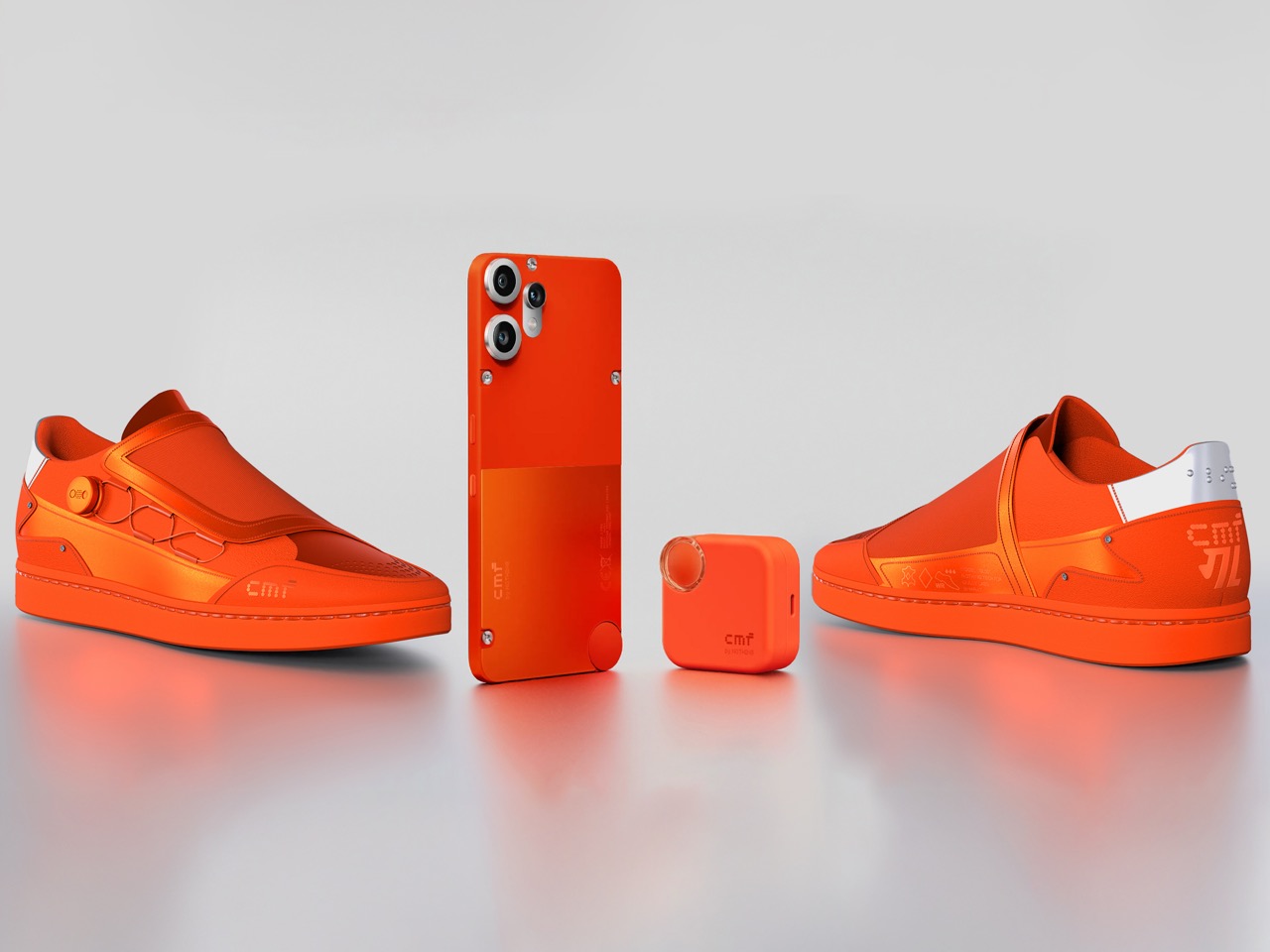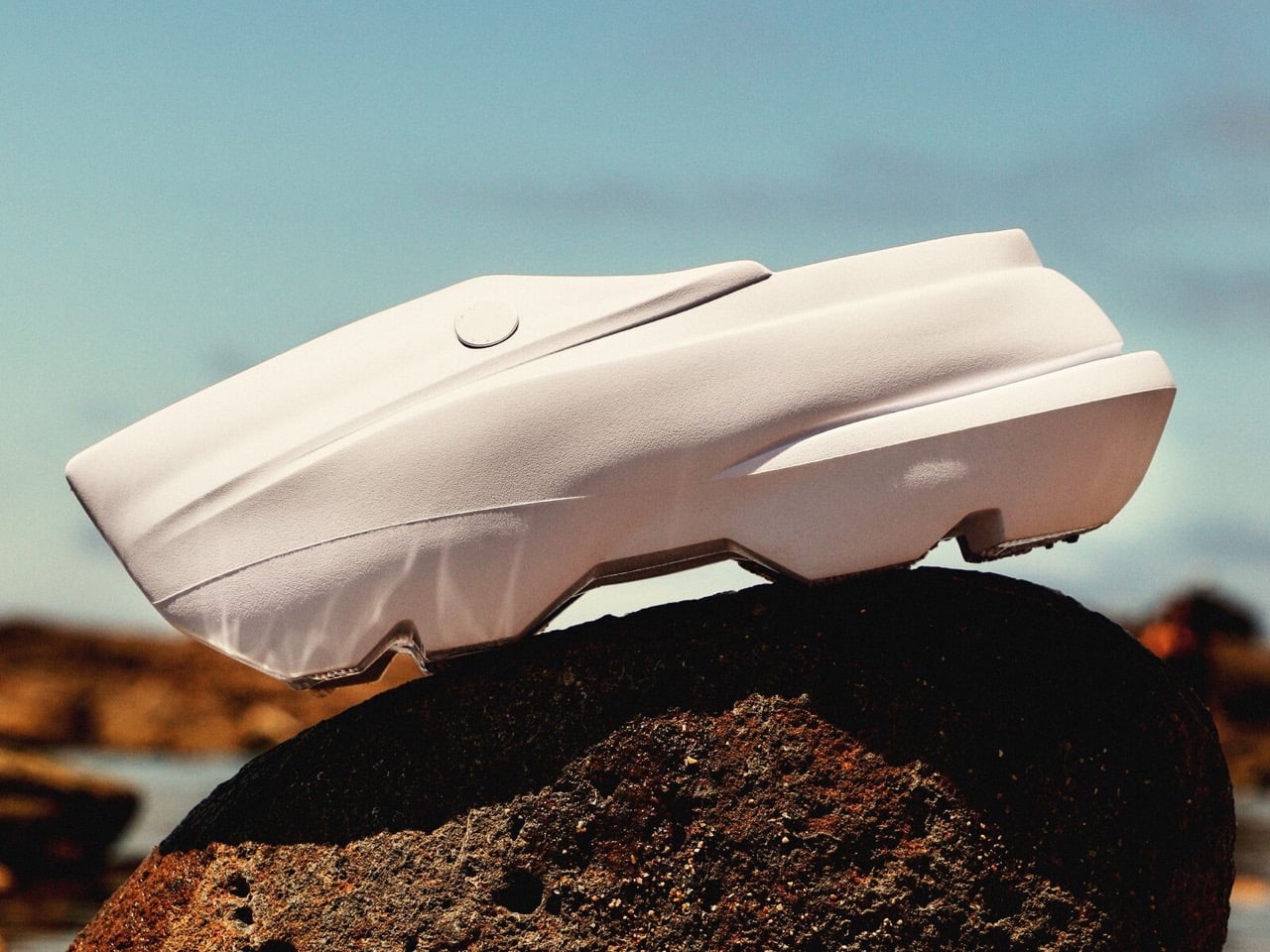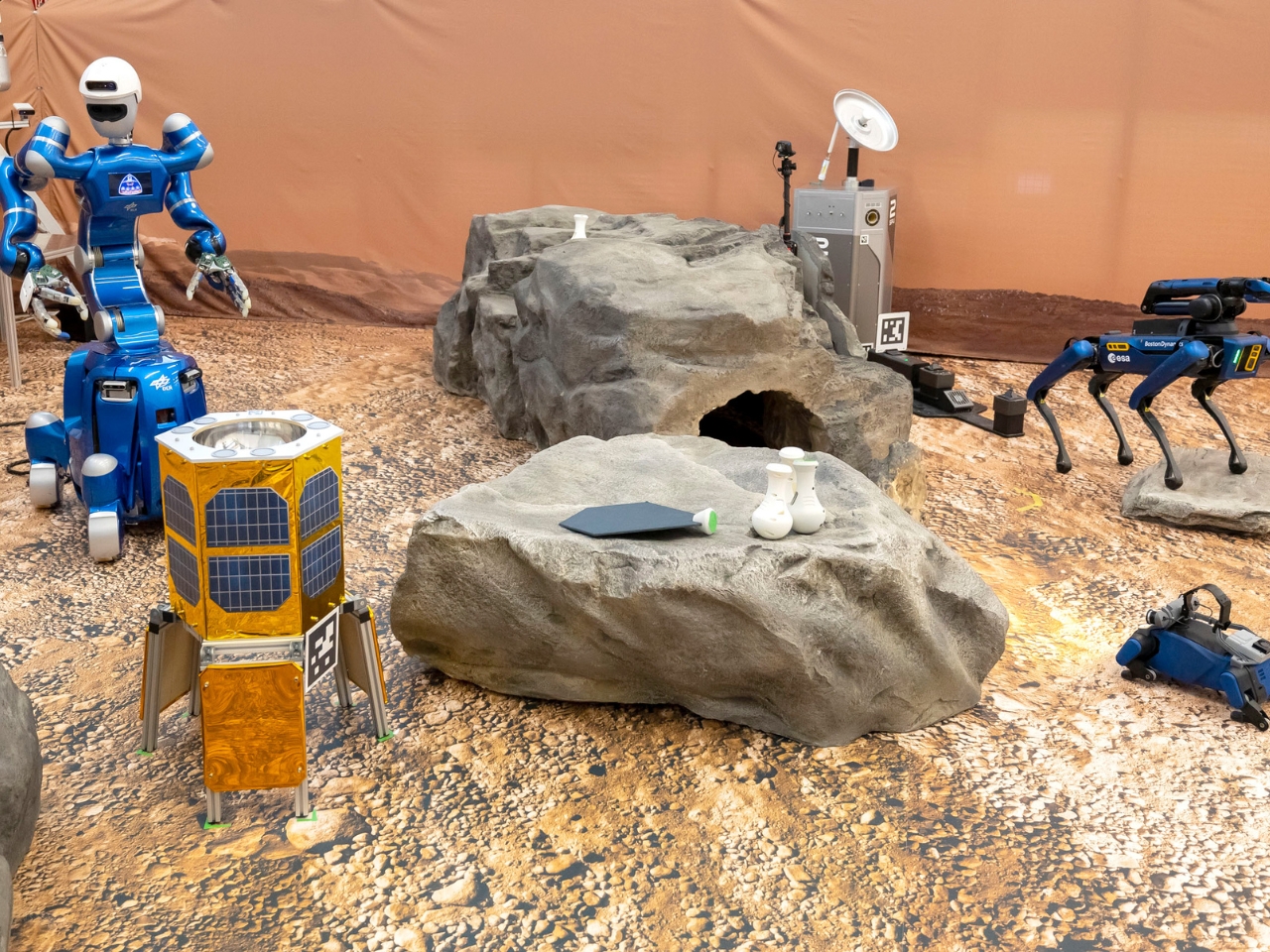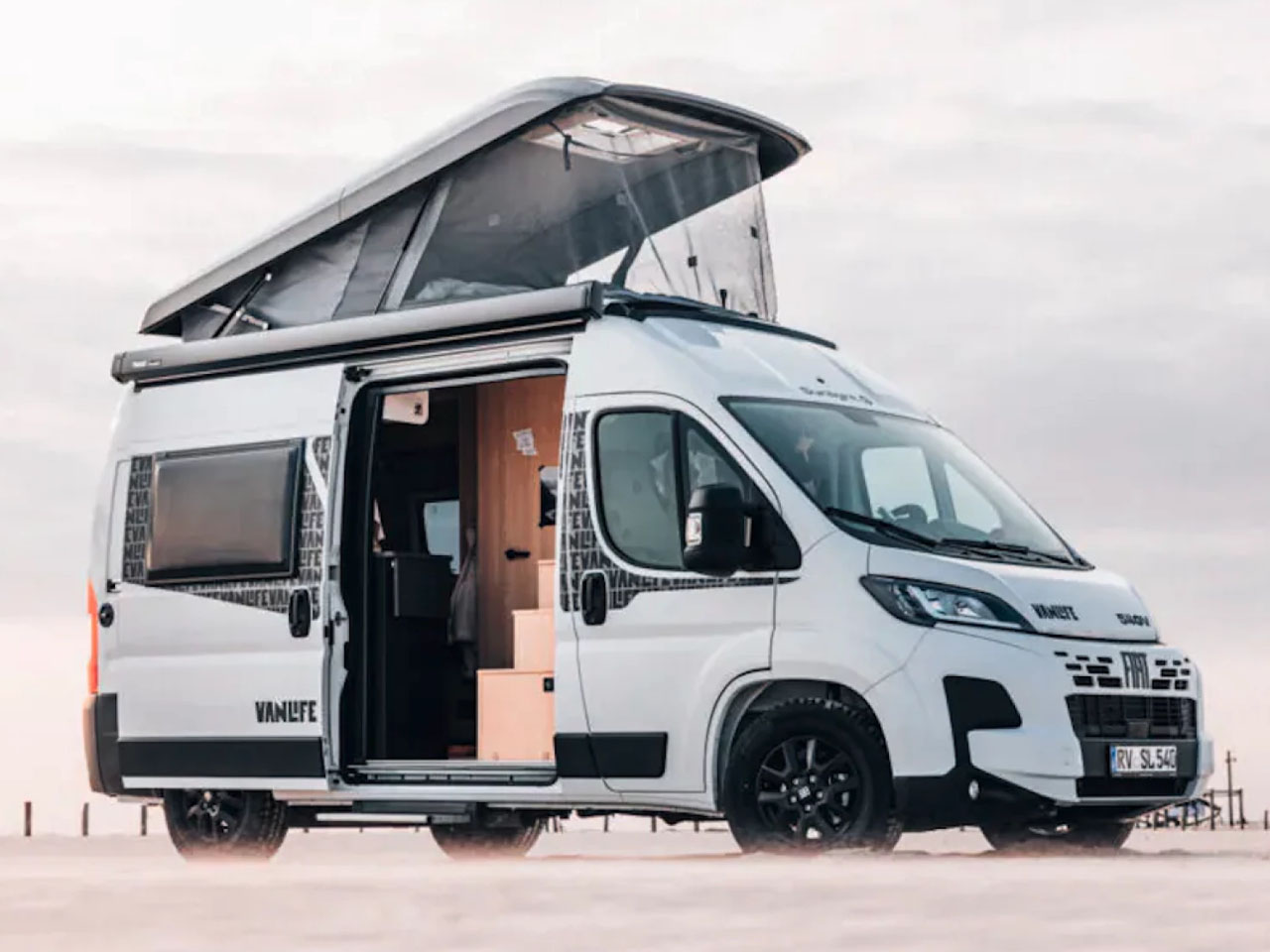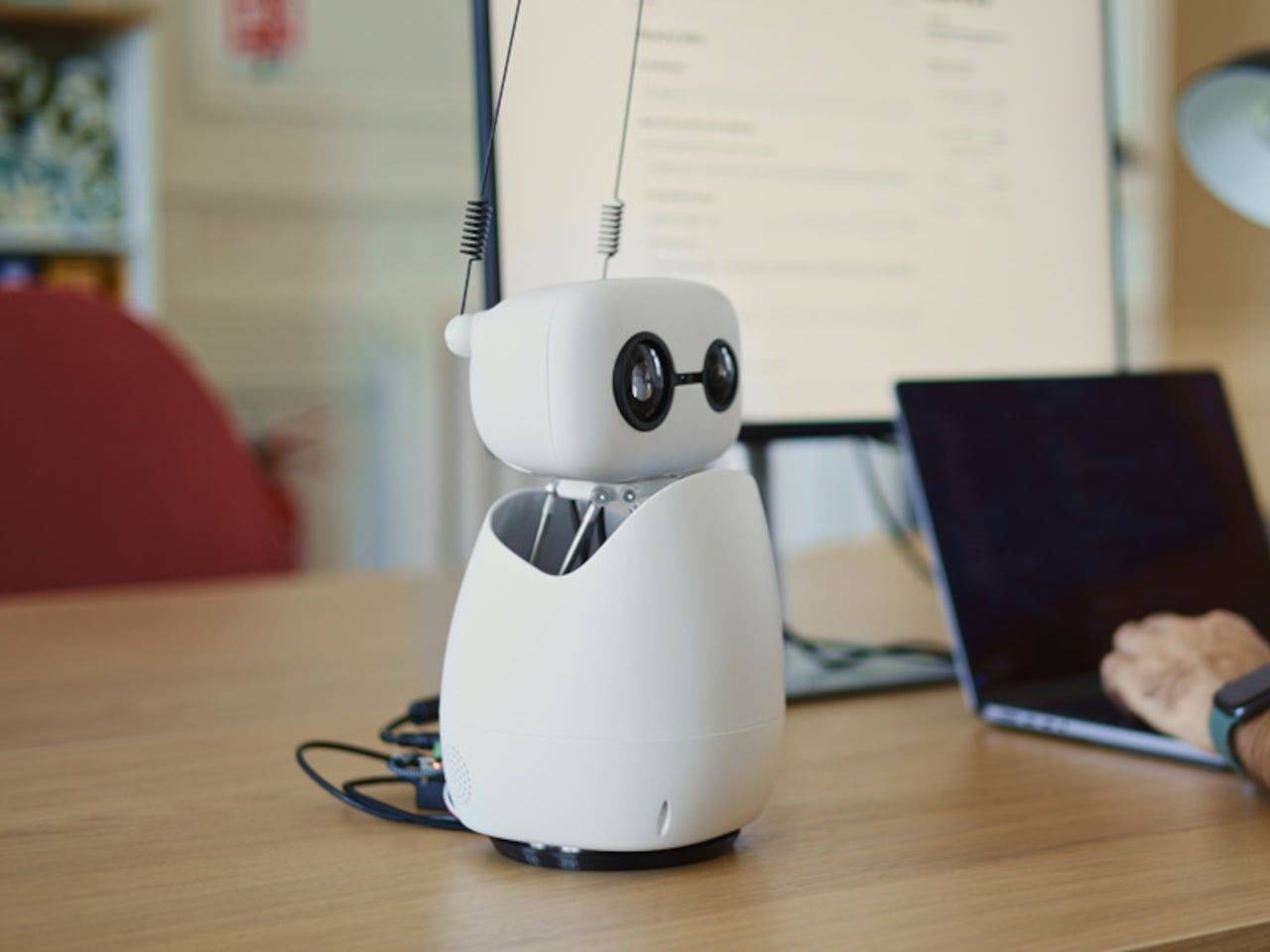Cet article fait partie de ma série de l’été spécial hackers. Bonne lecture !
Installez vous confortablement car cet article va être un peu long… Normal, il raconte l’histoire complètement dingue d’un gang de cybercriminels qui a littéralement fait muter un simple ransomware en startup façon Silicon Valley.
Conti, c’est l’histoire d’une organisation criminelle russe qui a généré 180 millions de dollars rien qu’en 2021, qui payait ses hackers avec des fiches de paie et des programmes “employé du mois” (si si, je vous jure), et qui s’est complètement vautrée après avoir choisi le mauvais camp dans la guerre contre l’Ukraine.
Bref, du jamais vu dans l’histoire du cybercrime !

L’écran de la mort version 2020 ou quand vos fichiers deviennent otages
Tout commence donc fin 2019, quelque part dans les bas-fonds numériques de Saint-Pétersbourg où un groupe de cybercriminels russes, déjà bien connus sous le nom de Wizard Spider (oui, “l’araignée magicienne”, ils ont pas cherché loin), décide qu’il est temps de passer à la vitesse supérieure.
Et ce ne sont pas des débutants, non, non, car depuis 2016, ils sont déjà derrière Ryuk, un ransomware qui a déjà rapporté la bagatelle de 150 millions de dollars et surtout TrickBot, l’un des botnets les plus vicieux au monde avec plus d’un million de machines infectées. Ce malware bancaire ultra-sophistiqué s’infiltre via des campagnes de phishing massives, vole vos identifiants bancaires, cartographie l’intégralité de votre infrastructure réseau, identifie les machines critiques, et prépare le terrain pour le déploiement du ransomware.
Mais avec Conti, ils veulent carrément industrialiser le crime.

Saint-Pétersbourg : ville des tsars, de Dostoïevski… et des cybercriminels millionnaires
Alors fin 2019, ils ont une super idée pour des criminels : Pourquoi se contenter d’attaques ponctuelles quand on peut créer le McDonald’s du ransomware avec des franchises ? C’est là que naît Conti et le principe est simple : transformer le ransomware en service (RaaS - Ransomware as a Service) comme ça au lieu de tout faire eux-mêmes comme des artisans à l’ancienne, ils vont recruter une armée d’affiliés qui feront le sale boulot de terrain, et tout le monde se partagera les bénéfices. C’est l’uberisation du crime, version russe.
Sauf que Conti va beaucoup plus loin que tous les autres gangs de ransomware car là où la plupart des groupes fonctionnent sur un modèle de commission classique (l’affilié garde 70-80% de la rançon, le reste va aux développeurs), Conti innove complètement puisqu’ils paient leurs affiliés avec un salaire fixe mensuel. Oui, un vrai salaire, avec des fiches de paie, des augmentations annuelles, et même des bonus de performance pour les meilleurs éléments. C’est la première fois dans l’histoire du cybercrime qu’on voit ça.
Et les documents qui ont fuité en 2022 (les fameux Contileaks, j’y reviendrais plus tard…) révèlent ainsi une organisation qui dépasse l’entendement. Des chasseurs de têtes russes parfaitement légitimes sont utilisés pour recruter de nouveaux “employés” sur des sites comme HeadHunter.ru (l’équivalent russe de LinkedIn). Les candidats passent des entretiens d’embauche en bonne et due forme, avec tests techniques et tout le tralala. Ils signent même des contrats (bon, évidemment pas super légaux) et intègrent des équipes ultra-spécialisées. Y’a l’équipe “pentest” qui s’infiltre dans les réseaux, l’équipe “crypto” qui gère les paiements Bitcoin et le blanchiment, l’équipe “négociation” qui discute avec les victimes, l’équipe “dev” qui améliore le ransomware, l’équipe “support” qui aide les affiliés en difficulté…
Ils ont même mis en place un programme “employé du mois” avec photo sur le mur virtuel et tout. Les meilleurs performers reçoivent ainsi des bonus en Bitcoin (entre 5 000 et 50 000 dollars selon les performances), des félicitations publiques sur leur chat interne Jabber, et des opportunités de “promotion”. Un hacker particulièrement doué peut ainsi gravir les échelons, et passer de simple “pentester” junior, à senior, puis à “team lead” avec une équipe de 5-10 personnes sous ses ordres, et enfin à “department head” avec des responsabilités stratégiques. C’est un crossover entre LinkedIn et Le Parrain.

Organigramme type d’un gang moderne - Source
Les salaires révélés dans les fuites donnent le vertige. Un débutant touche environ 1 500 à 2 000 dollars par mois (ce qui est très correct en Russie où le salaire moyen tourne autour de 700 dollars). Un expert confirmé peut monter jusqu’à 10 000 dollars mensuels. Les team leads touchent entre 15 000 et 20 000 dollars. Et les top managers ? On parle de 50 000 dollars par mois et plus. Tout ça payé en Bitcoin évidemment, via des mixers et des échanges décentralisés pour brouiller les pistes. Certains touchent même des “stock options” sous forme de pourcentage sur les futures rançons. Du jamais vu.

Le Bitcoin : la monnaie officielle du crime organisé 2.0
Maintenant, parlons du big boss de cette organisation criminelle 2.0 : Vitaly Nikolaevich Kovalev, 36 ans au moment des faits, connu sous une ribambelle de pseudos tels que “Stern” (son préféré), “Demon”, “Ben”, “Bergen”, “Vitalik K”, ou encore “Alex Konor”. Ce type est littéralement un fantôme numérique car pendant des années, absolument personne ne savait qui se cachait derrière ces pseudos. Même ses plus proches “collaborateurs” ne connaissaient que sa voix sur les chats vocaux chiffrés. Il dirigeait TrickBot et Conti depuis l’ombre, accumulant une fortune estimée par les autorités allemandes à plus de 500 millions de dollars en crypto. Un demi-milliard, vous vous rendez compte ?
Et Kovalev n’est vraiment pas votre hacker cliché en sweat à capuche. C’est un pur businessman du crime, un Steve Jobs du ransomware. Il a compris avant tout le monde que le cybercrime pouvait être organisé exactement comme une entreprise légitime du Fortune 500. Sous sa direction, Wizard Spider est ainski passé d’un petit groupe de hackers russes lambda à une organisation de plus de 150 membres permanents, avec des départements, des process ISO-compliant (j’exagère à peine), des KPIs, des dashboards de performance en temps réel, et même une charte d’entreprise (qui incluait bizarrement un code de conduite éthique, allez comprendre).

Vitaly Nikolaevich Kovalev alias Stern
Alors concrètement, comment fonctionne une attaque type de Conti ? Vous allez voir, c’est du grand art criminel, une chorégraphie millimétrée.
Phase 1 : l’infection initiale. Soit via TrickBot (leur botnet historique), soit via BazarLoader (la version 2.0), soit carrément via des campagnes BazarCall où des call centers indiens appellent les victimes en se faisant passer pour Microsoft. “Bonjour, nous avons détecté un virus sur votre ordinateur, laissez-nous vous aider.” Vous connaissez, c’est classique mais ça marche encore.
Une fois TrickBot installé, le malware fait son boulot de reconnaissance. Il mappe le réseau avec la précision d’un chirurgien : identification des contrôleurs de domaine, des serveurs de sauvegarde, des bases de données critiques, des partages réseau, des comptes à privilèges. Cette phase peut durer des semaines, voire des mois. Les hackers sont patients, méthodiques. Ils utilisent des outils légitimes comme ADFind ou SharpView pour passer sous les radars. Tout est documenté dans des rapports détaillés envoyés à l’équipe d’analyse.
Phase 2 : l’escalade de privilèges et le mouvement latéral. C’est là que Cobalt Strike entre en jeu. Ah, Cobalt Strike… Initialement un outil légitime de pentest à 3 500 dollars la licence, devenu l’arme préférée des cybercriminels. Les versions crackées circulent sur tous les forums underground russes. Conti utilise des configurations custom avec des profils de communication qui imitent le trafic légitime de Google ou Microsoft, leur donnant un contrôle total : exécution de commandes, keylogging, captures d’écran, pivoting, tout y passe.
Et les hackers désactivent méthodiquement toutes les défenses. Windows Defender ? Désactivé via GPO. EDR d’entreprise ? Contourné ou carrément supprimé. Sauvegardes ? Effacées ou chiffrées en premier. Ils utilisent même des techniques d’évasion ultra-sophistiquées : injection de processus, DLL hollowing, obfuscation PowerShell…
Phase 3 : le déploiement du ransomware. Et là, c’est du brutal car Conti est programmé pour chiffrer un maximum de données en un minimum de temps. On parle de 32 threads parallèles qui tournent à plein régime, capable de chiffrer 100 000 fichiers en moins de 10 minutes. Et l’algorithme, c’est du solide : AES-256 pour les fichiers (avec une clé unique par fichier), puis RSA-4096 pour chiffrer les clés AES. Mathématiquement incassable sans la clé privée. Les versions récentes sont passées à ChaCha20 pour gagner encore en vitesse et ainsi, en quelques heures, parfois minutes sur les petits réseaux, tout le système d’information d’une entreprise est foutu.
Mais Conti ne se contente pas de chiffrer vos données. Non non, ce serait trop simple. Avant de lancer le ransomware, ils exfiltrent des téraoctets d’informations sensibles via rclone ou MegaSync. Contrats, données clients, secrets industriels, emails compromettants, tout y passe. Comme ça, si la victime refuse de payer, ils menacent de publier ces données sur leur site “Conti News”, accessible uniquement via Tor. C’est ce qu’on appelle la “double extorsion” : vous payez pour récupérer vos données ET pour éviter qu’elles soient publiées. Certaines victimes ont même subi une “triple extorsion” avec des attaques DDoS en prime si elles traînent trop.

Double extorsion : Si vous ne payez pas, vos données finissent ici (ou pas si elles ont été vendues)
Et les montants des rançons donnent le tournis. En moyenne, Conti demande entre 500 000 et 5 millions de dollars, avec une médiane autour de 800 000 dollars. Mais pour les grosses entreprises ou les gouvernements, ça peut monter beaucoup, beaucoup plus haut. Le Costa Rica s’est par exemple vu réclamer 10 millions initialement, puis 20 millions quand ils ont refusé. Certaines multinationales auraient même payé des rançons à huit chiffres… je vous parle de 20, 30, voire 40 millions de dollars. La plus grosse rançon confirmée est de 34 millions de dollars payés par une compagnie d’assurance américaine (dont le nom n’a jamais fuité).
Le “département négociation” de Conti, c’est aussi du grand art en matière de manipulation psychologique. Des négociateurs sont formés aux techniques de persuasion avancées… Ils alternent menaces voilées et fausse empathie, jouent sur l’urgence ("chaque jour de retard coûte 100 000 dollars supplémentaires"), proposent des “réductions” pour paiement rapide ("payez dans les 48h et on vous fait 40% de remise, offre limitée !"). Certains se font même passer pour des “consultants indépendants en cybersécurité” qui peuvent “aider” la victime à sortir de cette situation délicate. Ils fournissent même des tutoriels détaillés pour acheter des bitcoins, c’est dire le niveau de “service client”.
Et les victimes de Conti, c’est un who’s who du malheur numérique… Hôpitaux, universités, municipalités, entreprises du CAC 40… Personne n’est épargné. J’en veux pour preuve l’attaque contre le Health Service Executive (HSE) irlandais en mai 2021 qui restera dans les annales avec 80% du système informatique du service de santé national irlandais paralysé du jour au lendemain. 54 des 58 hôpitaux existants ont été touchés. Les médecins obligés de revenir au papier et au stylo, les IRM et scanners hors service, les dossiers patients inaccessibles, des opérations chirurgicales reportées, des chimiothérapies retardées, des ambulances détournées. Bref, un chaos total qui a duré des semaines.
Et le coût total pour l’Irlande ? Plus de 100 millions d’euros en dommages directs, et potentiellement 600 millions en incluant la remédiation et le renforcement de la sécurité. Et tout ça pourquoi ? Parce que le HSE a courageusement refusé de payer les 20 millions de dollars de rançon demandés. Respect pour le principe, mais la facture finale a fait mal. Très mal.
Et des mois après l’attaque, certains systèmes n’étaient toujours pas restaurés.

Quand les ransomwares s’attaquent aux hôpitaux, ce sont des vies qui sont en jeu
Mais l’attaque la plus spectaculaire, celle qui restera dans les livres d’histoire, c’est l’assaut contre le Costa Rica en avril-mai 2022 dont je vous parlais juste avant. Le 17 avril, premier coup de semonce : le ministère des Finances costaricain est frappé. Les systèmes de déclaration d’impôts et de douanes sont KO. Puis c’est l’escalade… ministère du Travail le 27 avril, puis Sécurité sociale, Sciences et Technologies, Fonds de développement social… Et en quelques semaines, c’est 27 institutions gouvernementales qui sont touchées, dont 9 complètement paralysées. Le pays ne peut littéralement plus fonctionner.
Face à cette cyberattaque d’une ampleur sans précédent, le président Rodrigo Chaves n’a alors pas d’autres choix et le 8 mai 2022, il fait une déclaration historique : État d’urgence national pour cause de cyberattaque. C’est la première fois dans l’histoire de l’humanité qu’un pays entier se retrouve en état d’urgence à cause de hackers. L’économie est paralysée, les exportations bloquées (le Costa Rica exporte pour 12 milliards de dollars par an), et les services publics à l’arrêt complet. Les experts estiment que chaque jour de crise coûte 30 à 38 millions de dollars au pays et en 3 semaines, cela représente près d’un milliard de dollars de pertes.

Costa Rica : première nation victime d’une cyber-guerre déclarée
Mais Conti ne s’arrête pas là. Dans un délire mégalomaniaque total, ils appellent carrément au renversement du gouvernement costaricain ! Sur leur site accessible via Tor, ils publient ceci : “Nous avons décidé de renverser le gouvernement par cyberattaque, nous avons nos raisons. Nous demandons aux citoyens du Costa Rica de faire pression sur leur gouvernement, sinon nous continuerons nos attaques.” Du jamais vu. Un gang de ransomware qui se prend pour une force révolutionnaire et menace la stabilité d’un État souverain. On n’est plus dans le cybercrime, on est dans le cyberterrorisme d’État.
La réaction internationale est alors immédiate. Le Département d’État américain sort l’artillerie lourde avec 15 millions de dollars de récompense : 10 millions pour des informations sur l’identité et la localisation des leaders de Conti, 5 millions supplémentaires pour toute info menant à des arrestations. C’est la plus grosse prime jamais offerte pour des cybercriminels, dépassant même certaines primes pour des terroristes. Le FBI mobilise des dizaines d’agents, Interpol émet des notices rouges, bref c’est une énorme chasse à l’homme qui démarre.

10 millions de dollars - Quand ta tête vaut plus cher qu’un yacht de luxe
Et pendant ce temps, c’est business as usual chez Conti. Les fuites qui ont eu lieu après coup en 2022 révèlent des conversations internes absolument surréalistes. On découvre le quotidien banal du crime organisé moderne. “Mango se plaint que son équipe pentest n’est pas assez productive, il demande l’autorisation de virer Tortik”, “Stern veut un rapport détaillé sur les métriques du Q3 avant jeudi”, “Professor organise une formation obligatoire lundi sur les nouvelles techniques d’évasion EDR”, “Le département compta signale un retard dans le paiement des salaires de novembre à cause de la volatilité du Bitcoin”… On se croirait dans les emails corporate de n’importe quelle entreprise, sauf qu’on parle de criminels qui détruisent des vies.
Et leurs problèmes RH sont particulièrement savoureux. Un manager se plaint : “Les devs veulent tous passer sur l’équipe crypto parce que c’est mieux payé, mais j’ai besoin d’eux pour patcher le ransomware !” Un autre : “Bentley a encore raté le daily standup ce matin, c’est la 3ème fois ce mois-ci, on fait quoi ?” Ou encore : “Les nouveaux refusent de bosser le weekend sans prime, c’est n’importe quoi, de mon temps on était motivés !” Y’a même des discussions sur la mise en place d’un système de congés payés et de RTT. Du grand n’importe quoi.
Les documents fuités incluent leur fameux “playbook”, le manuel d’opération intégral donné aux nouveaux affiliés. 435 pages en russe (les fuites contenaient plusieurs versions) qui détaillent absolument tout : Comment utiliser Cobalt Strike (avec une licence crackée fournie), comment identifier les cibles prioritaires dans un Active Directory, les 10 commandements de la négociation de rançon, comment blanchir les bitcoins via Monero, les erreurs de débutant à éviter… C’est tellement détaillé et bien fait qu’un amateur motivé pourrait suivre les instructions et lancer une attaque ransomware professionnelle.

Le playbook révèle également leur arsenal technique complet. Outre l’incontournable Cobalt Strike, on y trouve : Metasploit et Armitage pour l’exploitation, BloodHound et SharpHound pour mapper l’AD, Mimikatz et LaZagne pour les mots de passe, PrintNightmare et ZeroLogon pour l’escalade de privilèges, rclone et WinSCP pour l’exfiltration… Ils ont même développé leurs propres outils custom : ContiLocker (le ransomware), ContiLeaks (pour l’exfil), ContiNegotiator (un chatbot pour les négociations !). Une vraie usine à malwares.

Cobalt Strike 4.3 en version crackée par Conti
Et les vulnérabilités exploitées sont soigneusement cataloguées avec leur niveau de fiabilité. ZeroLogon (CVE-2020-1472) : “Fonctionne dans 95% des cas, privilégier sur les DC Windows 2012-2019”. PrintNightmare (CVE-2021-34527) : “Excellent pour l’escalade locale, attention aux patchs de juillet 2021”. ProxyShell/ProxyLogon : “Cible Exchange, très efficace, permet installation directe du webshell”. EternalBlue (MS17-010) : “Vieux mais gold, encore présent sur 30% des réseaux”. Ils ont même un système de notation des exploits de 1 à 5 étoiles, comme sur Amazon.
Mais ce qui ressort le plus des fuites, c’est aussi cet aspect “corporate dystopique” de l’organisation. Les discussions sur les augmentations de salaire ("Rescator mérite ses 8000$/mois, il a ramené 3 grosses victimes ce trimestre"), les formations obligatoires ("Rappel : webinar sur OPSEC jeudi 15h heure de Moscou, présence obligatoire"), les conflits entre équipes ("L’équipe de Baget refuse de partager ses accès avec nous, c’est du sabotage"), les réorganisations ("Suite au départ de Tramp, fusion des équipes Pentest-1 et Pentest-3")… C’est The Office version cybercrime.
Y’a même des discussions hallucinantes sur la “culture d’entreprise”. Un manager RH propose d’organiser des “team buildings virtuels” pour améliorer la cohésion. Un autre suggère de créer un channel #random sur Jabber pour que les employés puissent “socialiser” et parler d’autre chose que de crime. Quelqu’un propose même d’organiser un tournoi de CS:GO inter-équipes. “Ça renforcera l’esprit de compétition saine”, dit-il. On croit rêver…
Mais tout ce bel édifice criminel va s’effondrer comme un château de cartes le 25 février 2022 car ce jour-là, c’est le lendemain de l’invasion russe en Ukraine, et Conti commet l’erreur fatale qui va signer son arrêt de mort. Ils publient sur leur site un communiqué de soutien inconditionnel à la Russie : “Le groupe Conti annonce officiellement son soutien total au gouvernement russe. Si quelqu’un décide d’organiser une cyberattaque ou toute activité de guerre contre la Russie, nous utiliserons toutes nos ressources pour riposter sur les infrastructures critiques de l’ennemi.”
En une phrase, ils viennent de politiser leur business et de se mettre une cible géante sur le dos.
Et la réaction ne se fait pas attendre puisque le 27 février, à peine 48 heures plus tard, un compte Twitter anonyme @ContiLeaks commence à balancer. Et pas qu’un peu. Le leaker signe chaque message “Slava Ukraini!” (Gloire à l’Ukraine). Il s’agit d’un membre ukrainien du groupe, révolté par la prise de position pro-Kremlin, qui décide alors de tout balancer. Un véritable Snowden du crime organisé. Et il a accès à TOUT.
L’ampleur de la fuite est absolument monumentale. 60 694 messages internes, soit 393 fichiers JSON compressés. Des conversations qui s’étalent de janvier 2021 à février 2022. Plus de 100 000 fichiers au total incluant le code source, les manuels, les outils, les bitcoins wallets, les vrais noms… C’est Wikileaks puissance 10. Les experts en sécurité parlent immédiatement des “Panama Papers du ransomware”. Jamais dans l’histoire du cybercrime on n’avait eu accès à autant d’informations internes sur un groupe criminel en activité.

ContiLeaks : quand 60 000 messages privés deviennent publics
Et les révélations sont absolument explosives. On découvre par exemple les liens avec le FSB russe (une conversation d’avril 2021 mentionne explicitement un financement FSB et leur intérêt pour des documents Bellingcat sur Navalny). On apprend les vrais noms derrière les pseudos. Les montants exacts des rançons (2,7 millions payés par Broward County, 1,1 million par Advantech, 5,5 millions par JBS…). Les disputes internes ("Pumba a volé 50k$ de la cagnotte commune", “Target refuse de payer sa part au développeur”). Les techniques secrètes. Les victimes non déclarées et les projets futurs, notamment qu’ils préparaient “Conti 2.0” avec des capacités de ver auto-réplicant. Un trésor pour les enquêteurs.
On découvre aussi des anecdotes croustillantes qui montrent le côté humain (si on peut dire) de ces criminels. Un membre se plaint d’avoir touché seulement 15 000 dollars pour une attaque qui a rapporté 2 millions ("C’est de l’exploitation !" dit-il). Un autre raconte comment il a failli se faire griller par sa femme qui a trouvé bizarre ses horaires décalés et ses revenus inexpliqués. Un troisième demande des conseils fiscaux : “Comment je déclare 500k$ de gains crypto sans me faire gauler ?” Les réponses sont hilarantes : “Dis que t’as investi dans le Dogecoin mdr”.
Les fuites révèlent également l’ampleur financière vertigineuse de l’opération. En 2021 uniquement, Conti a généré 180 millions de dollars de revenus bruts. Les analyses blockchain des wallets exposés montrent des mouvements de fonds massifs. Un transfert de 85 000 dollars de “Stern” vers “Mango” pour payer les salaires de décembre. 2,3 millions transférés vers un mixer Monero en une seule transaction. Des dizaines de wallets avec des soldes à 6 ou 7 chiffres. La fortune totale du groupe est estimée à plus de 2 milliards de dollars en crypto au moment des fuites.
Les analystes découvrent que ces 180 millions se répartissent ainsi : environ 30% (54 millions) pour le “core team” Conti, 70% (126 millions) redistribués aux affiliés et employés. Mais attention, c’est du brut. Après les coûts opérationnels (infrastructures, corruption, blanchiment qui coûte 20-30%), le profit net du groupe tourne autour de 30-40 millions par an. Pas mal pour une “startup” criminelle de 150 personnes.
Malgré l’hémorragie des fuites, Conti tente alors de continuer. Le leaker ukrainien publie de nouvelles conversations “fraîches” en mars, montrant la panique interne. Les membres s’accusent mutuellement d’être la taupe, la paranoïa explose. “C’est forcément quelqu’un du département négociation”, “Non, ça vient de l’équipe dev, ils ont accès à tout”, “Je parie sur ce fdp de Hardy, il a toujours été louche”. Certains membres clés disparaissent du jour au lendemain. L’ambiance devient toxique, irrespirable.
Les autorités mondiales profitent alors de ce chaos pour resserrer l’étau et le 10 février 2023, les États-Unis et le Royaume-Uni frappent fort avec des sanctions contre 7 Russes identifiés grâce aux fuites : Gel des avoirs, interdiction de transactions, inscription sur les listes noires internationales. Les banques crypto commencent à bloquer les adresses liées à Conti. Même les exchangers louches du darknet refusent de toucher à leurs bitcoins. La pression devient insoutenable.
Et le 19 mai 2022, c’est fini. Les sites de Conti disparaissent d’Internet. Le blog “wall of shame” qui listait les cibles, le site de négociation, les serveurs C2, toute l’infrastructure publique s’évanouit en quelques heures. Le leader du chat interne poste un dernier message : “C’était un honneur de servir avec vous. Bonne chance pour la suite.” Puis plus rien. Après deux ans et demi d’activité, après avoir généré des centaines de millions et causé des milliards de dégâts, le rideau tombe sur Conti. Une chute spectaculaire pour celui qui fut le roi incontesté du ransomware.
Mais est-ce vraiment la fin ? Les experts sont unanimes : Non.
Wizard Spider n’a pas disparu, il s’est juste dispersé façon puzzle. En effet, des analyses post-mortem suggèrent que Conti s’est fragmenté en au moins une dizaine de nouveaux groupes. Black Basta (qui cartonne depuis mi-2022), Royal/BlackSuit, Karakurt, BlackByte, et d’autres opérations sans nom. C’est l’hydre de la mythologie… tu coupes une tête, dix repoussent. Sauf qu’au lieu d’une organisation centralisée, on a maintenant une constellation de groupes autonomes, plus petits, plus agiles, plus difficiles à traquer.
Les anciens de Conti ont aussi essaimé dans l’écosystème criminel global. On retrouve leurs techniques, leurs outils, leur philosophie dans des dizaines d’autres opérations. LockBit a recruté plusieurs ex-Conti. ALPHV/BlackCat compte d’anciens négociateurs Conti dans ses rangs. Le playbook Conti est devenu la bible du ransomware moderne, téléchargé et étudié par tous les apprentis cybercriminels. L’héritage de Conti vit, se transforme, mute. Comme un virus.
Quant à Vitaly Kovalev, le mystérieux cerveau derrière toute l’opération ? Et bien il court toujours. Les autorités allemandes ont confirmé son identité en 2024 et estiment qu’il vit quelque part entre Moscou et Saint-Pétersbourg. Avec sa fortune en crypto estimée à 500 millions de dollars minimum (probablement plus proche du milliard aujourd’hui avec la hausse du Bitcoin), il a les moyens de rester planqué très longtemps. Nouveaux papiers, chirurgie esthétique, protection rapprochée, résidences multiples… La Russie n’extradant pas ses citoyens, surtout quand ils ont possiblement des liens avec les services, alors Kovalev peut dormir tranquille. Pour l’instant.

Moscou - Le refuge doré des cybercriminels milliardaires
Du coup, qu’est-ce qu’on retient de cette histoire de dingue ?
D’abord, le cybercrime s’est professionnalisé à un niveau qu’on n’imaginait même pas. Ces groupes fonctionnent exactement comme des multinationales, avec leurs process, leurs KPIs et leurs départements spécialisés. Mais le plus inquiétant, c’est qu’ils se politisent… ils prennent position dans des guerres, menacent de renverser des gouvernements démocratiques et entretiennent des liens avec les services de renseignement. On est passé du simple banditisme numérique à une forme de guerre hybride où les criminels deviennent des mercenaires numériques.
Les dommages causés par Conti donnent également le vertige. On parle de minimum 2 milliards de dollars en dégâts directs, mais si on ajoute l’indirect, on monte facilement à 10 milliards. Des hôpitaux ont été paralysés, des PME ont mis la clé sous la porte, des infrastructures critiques ont été fragilisées. L’impact va bien au-delà du financier. Et le modèle RaaS qu’ils ont perfectionné a complètement changé la donne. Aujourd’hui, n’importe quel apprenti hacker peut louer un ransomware sur le darknet et lancer des attaques. C’est l’uberisation totale du cybercrime, et cette accessibilité fait froid dans le dos.
Heureusement, les entreprises ont tiré des leçons. Les budgets cybersécurité ont explosé, dépassant les 200 milliards en 2024, et les bonnes pratiques comme les sauvegardes 3-2-1 se généralisent. Mais c’est une course sans fin car les nouveaux groupes issus de Conti utilisent déjà l’IA, achètent des 0-days et corrompent des employés en interne.
Paradoxalement, les fuites de Conti ont aussi été une aubaine pour la communauté InfoSec car pour la première fois, on a pu étudier de l’intérieur le fonctionnement d’un gang majeur de cybercriminels, ce qui a permis de développer de nouvelles défenses et de procéder à plusieurs arrestations. Mais ces fuites ont aussi révélé la fragilité de ces empires criminels : un seul membre mécontent et une déclaration politique mal placée ont suffi à faire s’écrouler toute l’organisation.
L’histoire de Conti restera comme le moment où des hackers anarchistes sont devenus des businessmen, où le ransomware est passé de l’artisanat à l’industrie lourde, et où la cybercriminalité s’est dangereusement mêlée de géopolitique. Et pendant ce temps, Stern sirote probablement un cocktail sur une plage de Sotchi, consultant le cours de ses +500 millions en crypto tout en se moquant de ceux qui le cherchent encore. Le crime paie, très bien même. Du moins, tant qu’on évite de tweeter son soutien à Poutine.
Alors la prochaine fois que votre équipe IT vous tanne pour une mise à jour, souvenez-vous qu’il existe des organisations criminelles avec des centaines d’employés et des millions en R&D, dont le seul but est de transformer votre infrastructure en machine à bitcoins.
Sources : Wikipedia - Conti ransomware, BleepingComputer - Conti leaks, Krebs on Security - Conti Diaries, The DFIR Report - Conti Analysis, CISA - Conti Alert, Heimdal Security - All about Conti, Rapid7 - ContiLeaks Analysis, Flashpoint - History of Conti, Global Initiative - Rise and Fall of Conti, Istari - Costa Rica Attacks
![]()
![]()
![]()
![]()
![]()
![]()
![]()
![]()
![]()
![]()
